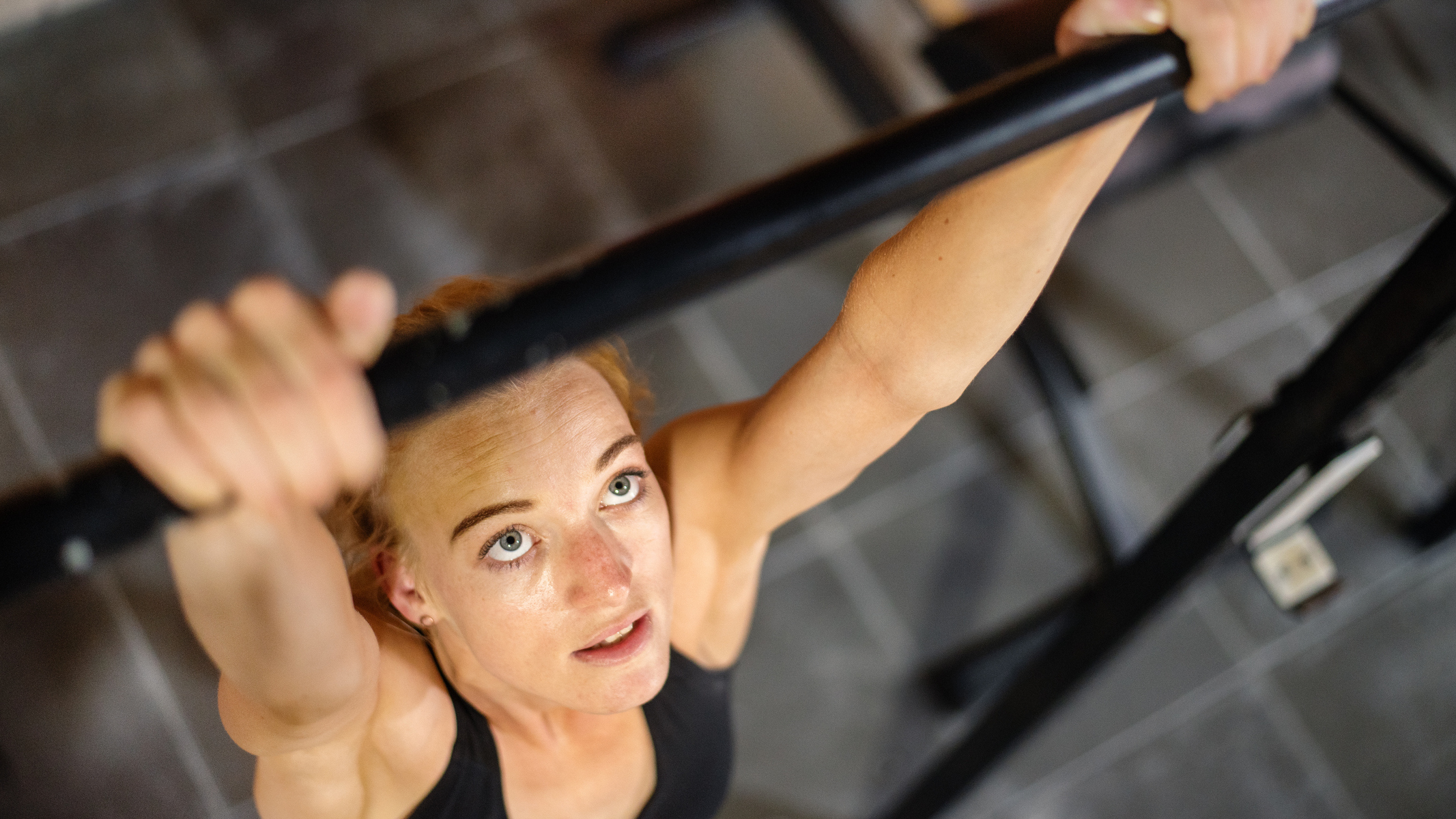Can't do a pull-up? This one drill made all the difference for me
Put yourself on the road to success with this strength-boosting move


I’m a level 3 personal trainer now, but I still remember the arduous journey to my first pull-up. It was a struggle because pull-ups are so hard, especially if you’re starting from zero upper-body strength like I was.
But I'm glad I put in the work to reach my goal. The pull-up recruits multiple muscle groups, and improves pulling power, grip strength and core stability. In everyday life, that translates to better posture and a stronger physique—not to mention a self-esteem boost.
It’s a misconception that you need arm strength to do a pulI-up. A strong core, upper back and lat muscles are more important for a pull-up, which should be performed with your palms facing away from you. (A chin-up, done with palms facing you, requires greater biceps strength.)
To get your first pull-up you need to follow a progressive strength program that gradually increases in difficulty. It should feature back-strengthening exercises like bent-over rows and lat pull-downs, as well as core work, hanging work and band-assisted pull-ups. In my experience, there is one other non-negotiable: the chin-over-bar hold.
A chin-over bar hold is an isometric hold, which means the muscles (in the back and core) are under tension but stay the same length. The top position is often where we're the weakest. Build your strength here and you’re more likely to achieve your first rep.
Even after my first pull-up, I kept practicing chin-over bar holds so I developed the strength to do my second, third and even eighth pull-up.
Here's how to do it.
Start your week with achievable workout ideas, health tips and wellbeing advice in your inbox.
How to do a chin-over-bar hold
You’ll need a bench, box or chair to get you into position.
- Stand on a sturdy platform and take hold of the bar with your hands just wider than shoulder-width apart, palms facing away.
- Jump into the top position of a pull-up, with your chin above the bar.
- Engage your upper back and core to hold this position. Squeeze your shoulder blades together.
- Slowly lower with control to finish the rep.
Beginners should aim for three reps of max second holds, which could be as little as a few seconds at a time at first, for three sets. Rest for 10 seconds between reps and up to a minute between sets. If you’re more experienced, find a time you can hold the position for and aim for three sets of three reps too. Increase your time in the hold, increase the number of reps and sets (or both) or reduce resting time as you get stronger.

Yanar Alkayat is a health and fitness editor, registered yoga therapist and level 3 personal trainer. She founded Yanar Mind & Movement alongside her journalism to offer specialist yoga therapy for people living with long-term health conditions, movement disorders and marginalised communities. Her chair yoga classes are funded by Parkinson's UK and she regularly runs yoga and fitness for refugee and asylum seeker groups in London. Formerly a content editor and fitness product testing manager at Women’s Health, Men’s Health and Runner's World, she continues to write for national print and digital media.